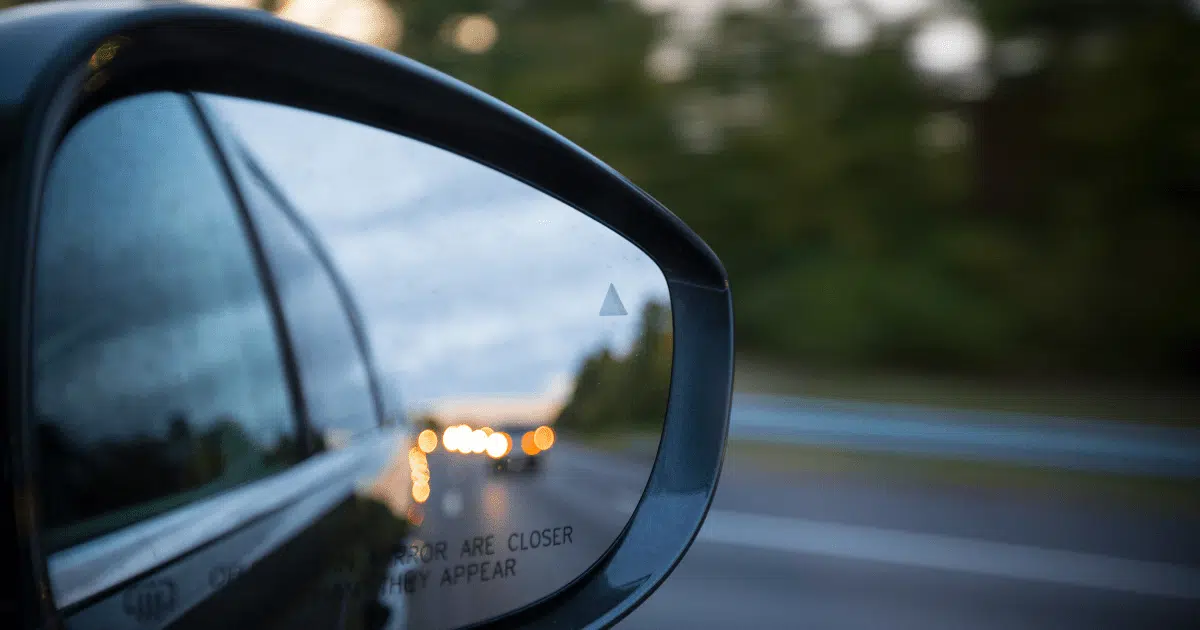According to research from the National Highway Traffic Safety Administration, almost one out of every 10 car accidents happen when a driver is switching lanes or merging. Many of these accidents are caused by blind spots. A blind spot is the area that you cannot see along the rear sides of your car. Depending upon how big your vehicle is, your blind spot may be small or large.
All vehicles have blind spots, and most drivers learn how to deal with them right away. A good way to navigate your blind spot is to stay attuned to what is happening around you. Avoiding distractions is a great way to avoid sideswipe accidents too, as well as positioning your rearview and side mirrors correctly so you get the most visibility. You could even ask passengers to help if you are driving with other people who can safely see if a car is coming up on your left or right.
Despite all of these efforts, you may still have trouble handling a blind spot. Car manufacturers have experimented with blind spot detection systems for more than two decades. This type of technology was first limited to luxury and higher-end vehicles because it was expensive. Now, blind spot monitoring systems are available in almost every new vehicle.
How does blind spot monitoring work? When an object comes into your blind spot, a camera that is mounted on the bumper or side of the car senses the object’s presence via ultrasonic or radar. At this point, you are warned about the object in a visual and/or audible way. For instance, your mirror may light up or flash red. At the same time, you may hear a chime or beep as an extra safety measure. If your car is equipped with a complementary feature, like automatic emergency steering, you may get even more protection. This gives you the chance to avoid getting into a car accident.
Should You Equip Your Vehicle With a Blind Spot Monitoring System?
Do blind spot monitoring systems work? According to statistics compiled by the Insurance Institute for Highway Safety (IIHS), blind spot monitoring systems are effective. The IIHS found that blind spot monitors lowered the incident of lane-related collisions by 14 percent and reduced injuries during those types of accidents by 23 percent.
If you are purchasing a new car, you may have the choice of buying a vehicle with a blind spot monitoring system. Alternatively, your car dealer may offer blind spot monitoring as a special package that you can add to your purchase. It may even be part of a safety bundle that includes many technology-driven features designed to help you avoid accidents or reduce their severity.
What if you have an older model vehicle and would rather not get a new one? Plenty of reputable companies sell aftermarket blind spot monitoring kits that are suited for different cars. You can find the kits in big-box stores and online. Make sure to read reviews before purchasing and installing a blind spot monitoring system.
Tips for Using a Blind Spot Monitoring System
All cars have blind spots. You may want to take that into consideration when weighing whether or not to get a car with blind spot monitoring or have an after-market product installed. Make sure to think about the people who will be driving your car as well. New drivers can find a blind spot monitoring system extremely helpful.
You may have been driving for a long time without a blind spot monitoring system. However, you can follow a few simple steps to get used to this new safety device:
- Take a few test spins with your car before going on a long trip. Make sure to change lanes and get acquainted with the technology so it does not seem strange to you on a busy highway. Make sure you take time to adjust to the system.
- Keep the cameras and sensors cleaned. It can be easy to forget that all the cameras and sensors on your car need to be free of debris and dust to work properly. Every few days, check them and wipe them off as needed.
- Trust your judgement. Even if you have blind spot monitoring, you should still trust your own judgement. Technology can fail or misfire. Some blind spot monitors are known to miss smaller objects, like animals.
What Should You Do After a Crash?
Even if your car has safety features, you can still get into a car accident. Before you feel like the technology has failed you, you should understand that no device is foolproof. You could have done everything right and still have been hit by a negligent driver.
After a car accident, you should get medical attention, and keep documentation regarding your injuries. You should also consider making an appointment to see a lawyer, especially if the accident has left you with a catastrophic injury.
Wilmington Car Accident Lawyers at Rhoades & Morrow Can Help You After a Severe Blind Spot-Related Collision
All drivers should be mindful of blind spots. However, auto technology cannot prevent all car accidents. If you were injured by a negligent motorist, speak with our Wilmington car accident lawyers at Rhoades & Morrow. Call us at (302) 427-9500 or complete our online form to schedule a free consultation. We have offices in Wilmington, Bear, and Milford, Delaware, and we serve clients throughout Middletown, Dover, Milford, Lewes, Rehoboth, Elsmere, and Seaford.





